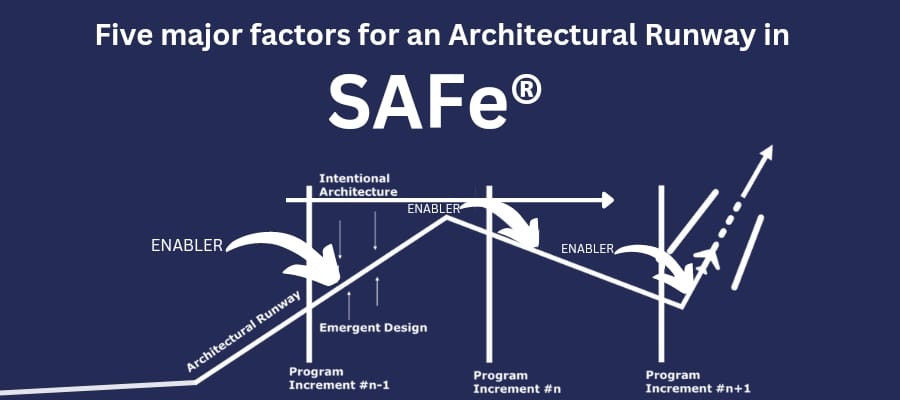Five Major Factors for an Architectural Runway in SAFe®

Every enterprise is unique, so the implementation of SAFe® will also vary. However, five major factors need to be considered for a successful architectural runway in SAFe®. When implementing the Scaled Agile Framework, or SAFe®, for an architectural runway, there are several key factors to consider. In this blog post, we'll explore five of the most important factors for creating an effective architecture in a SAFe® environment.
Let’s Get Started
The success of any software development project depends on the ability of the team to deliver quality software within a set timeframe. To achieve this, it is essential to have a clear and concise architectural runway. The following are five major factors that should be considered when establishing an architectural runway in SAFe®:
- Team Structure
When it comes to software development, the size and composition of the team can have a direct impact on the ability to deliver the product within a set timeframe. If the team is too small, they will likely be overwhelmed by the workload and unable to meet the deadline. On the other hand, if the team is too large, it can become unmanageable and bogged down by bureaucracy.
The ideal team size is somewhere between, with enough members to handle the workload but not so many that coordination becomes an issue. In addition to size, it is also important to consider the team members' skill sets. The ideal team is composed of individuals with complementary skills who can work well together. By carefully considering both size and composition, you can ensure that your software development team is well-equipped to meet your project deadlines.
- Workflow Processes
A well-designed workflow process is essential for any team that wants to be effective and efficient. Each team member should know their role and responsibilities within the process and be able to execute their tasks promptly. The workflow should also allow for feedback and communication between team members. By promoting collaboration and ensuring that everyone is on the same page, a workflow process can help any team to achieve its goals.
- Documentation
Documentation is essential for any design project. It helps to ensure that all team members are on the same page and that any changes or modifications made to the codebase are promptly communicated. Detailed documentation also allows team members to quickly identify any potential problems. In addition, documentation can help new team members get up to speed on a project more quickly. For these reasons, it is important to ensure that all design decisions are properly documented. By doing so, you can help to ensure the success of your project.
- Test Cases
Thorough testing is essential for the development of high-quality software. A comprehensive suite of test cases is necessary to ensure that the software meets all requirements. These test cases should cover all aspects of the software, including functionality, performance, security, and scalability.
By thoroughly testing the software before it is released, companies can avoid costly mistakes and ensure that their products meet customer expectations. In addition, thorough testing can help to identify potential security vulnerabilities, ensuring that the software is safe to use. While creating a comprehensive suite of test cases takes time and effort, the benefits of doing so are clear. Thorough testing is essential for developing high-quality, safe, and secure software.
- Deployment Infrastructure
Any software development project requires a certain amount of infrastructure to be successful. This infrastructure includes the physical hardware needed to run the project and the software tools and services needed to support the development process. When designing the deployment infrastructure for a project, it is important to keep reliability and scalability in mind.
The infrastructure should be able to handle the project's demand and provide adequate resources for all team members. In addition, the infrastructure should be adjustable to accommodate any changes made to the codebase or project requirements. By keeping these factors in mind, it is possible to create an infrastructure that will support a software development project from start to finish.
Final Word
Though there are many factors to consider when beginning the planning process for an architectural runway, these five major factors will help set your SAFe® foundation. With a strong team structure and well-documented workflow processes, you will be on your way to a successful implementation. Don't forget about test cases and deployment infrastructure! These two additional components round out the essential items needed for success. So, what are you waiting for? Get started on planning your SAFe® implementation today
Developing software is a complex process that requires careful planning and execution. By taking the time to consider all aspects of the project, companies can increase their chances of success. In addition, by using the latest tools and technologies, companies can further improve their chances of delivering high-quality software on time and on budget.



